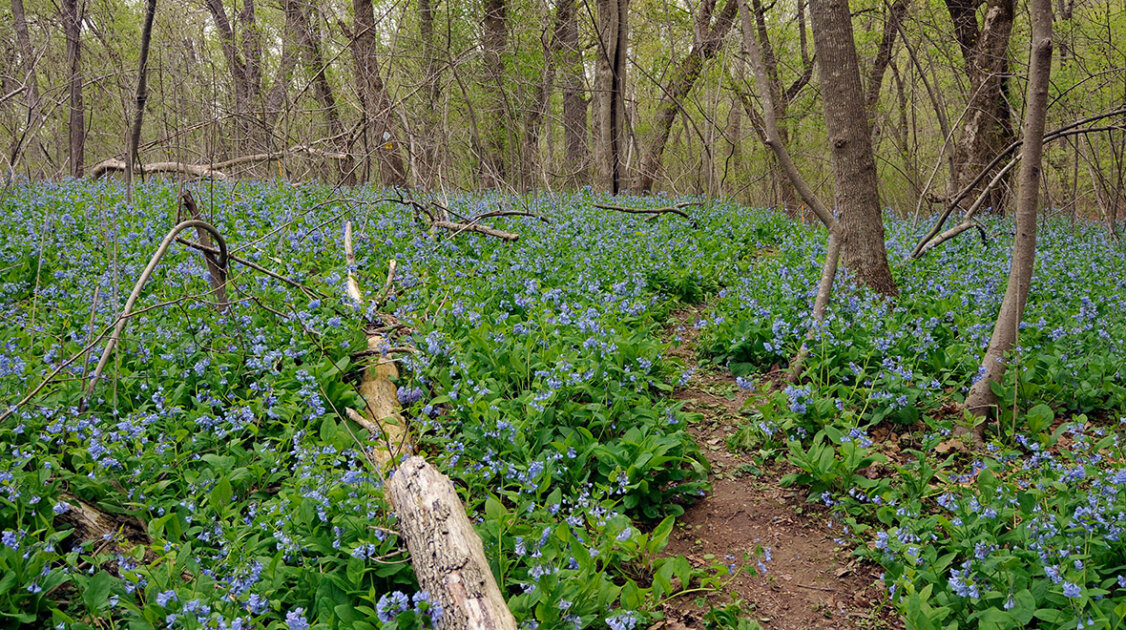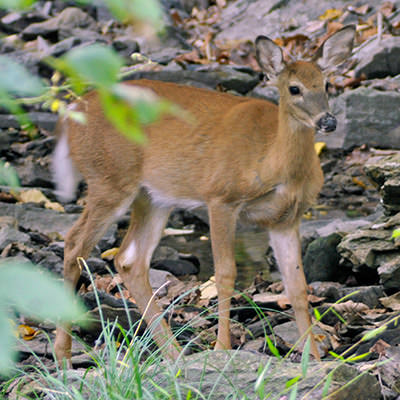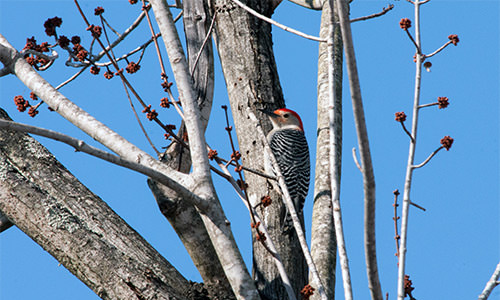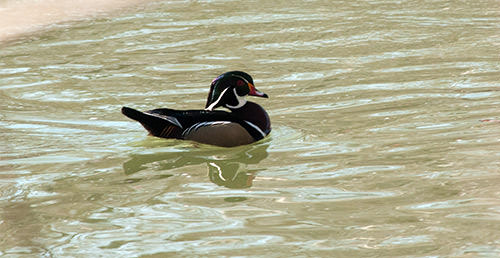
Animals and Plants
Fabulous Flora and Fauna

Plant and animal life abound at the Cool Spring river campus. Each summer, more than two dozen great blue heron families raise their young in a rookery of nests clustered in the tops of riverside sycamore oak trees. Visitors can also spot bald eagle nests, measuring up to ten feet wide. The eagles use the river as fishing grounds. The river and nearby ponds also attract ducks, cormorants and red-winged blackbirds.
In the mammalian world, white-tailed deer are plentiful, especially at dawn and dusk. Beavers, raccoons and muskrats also have been spotted at the site, and glimpses of red foxes are also possible. Bat boxes on the property provide homes for the only mammals that can truly fly. Virginia’s bats are nocturnal, which means they sleep during the day and are active at night. A single bat can consume up to 3,000 insects a night, making them wonderful wild neighbors.

The river also teems with dragonflies, mayflies and other insects, plus a variety of fish including smallmouth and largemouth bass, sunfish, crappie, and catfish. At least a half-dozen turtle species live on the river campus, including box and painted turtles.
Trees and other plant life are plentiful on the property. Giant sycamores, more than 100 years old, grow beside the Shenandoah River. The bur oak, a rare tree in the state of Virginia that appears to be confined to Shenandoah Valley floodplains, can be found at Cool Spring. Bur oaks have distinct “mossy-cup” acorns as large as ping-pong balls. Silver maples and box elder trees grow in low-lying swamps and along streams.

Beautiful Virginia bluebells bloom along the river in spring. More than three dozen other spring wildflower species also grow on the property and along the entrance road, including twinleaf, early saxifrage, spring beauties, and Dutchman’s breeches. Meadow plants bloom in the summer and fall, as do plants growing on the rock outcrops.
